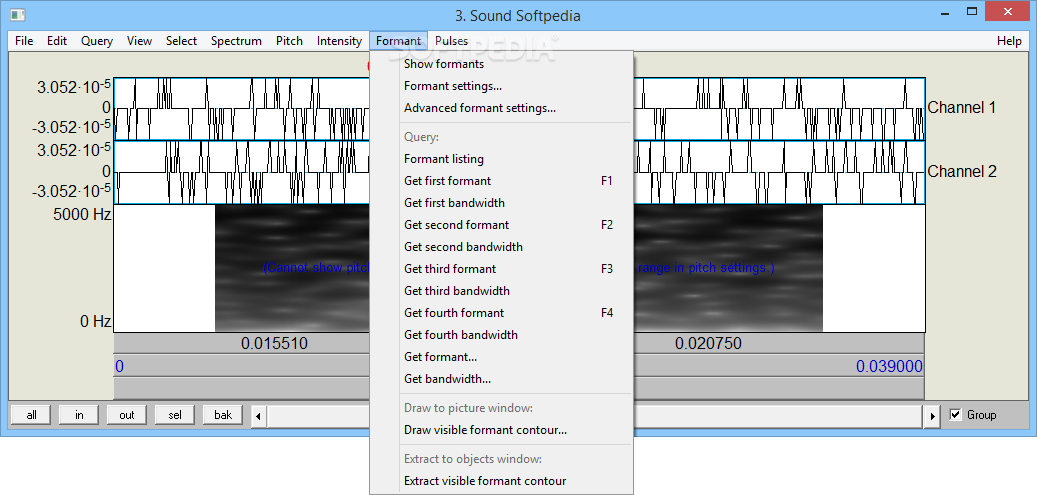

from the Margins menu in the picture window. (5) You can add grid lines to your drawing by selecting for example, Marks left every. You have to set these options before you do the drawing! You can select these options from the Pen menu in the picture window. When doing this, it is helpful to differentiate the plotted curves by means of color or texture or line thickness. (4) If you repeat step (3) with another pitch contour, then the two will be superimposed in the drawing window. In the example below, I superimpose several pitch contours, so I choose explicit start and end times (0 and 1 second respectively). If you set the start time and end times both to 0, it will plot the entire signal. (3) In the resulting dialog box, set the plot ranges (time and frequency). (2) Go to the Praat objects window and select the Pitch object you wish to draw. To select a larger area, hold down the mouse and move over the area you want to draw in. When you click in the window, you will see a small square highlighted. Drawing pitch contours in the Praat picture window A new object will appear in the list of Praat objects called Pitch untitled, which you can rename. (7) If you want to save pitch contour into a picture file that you can incorporate into a document, (or if you want can superimpose several contours), select Extract Visible Pitch Contour from the Pitch menu of the Edit window. So you could, for example measure the minimum and maximum values. (6) As you move the cursor, the value of pitch is displayed on the screen. For an explanation of them, you can consult online Praat help, which I have reproduced here. For other parameters, select Advanced Pitch Settings. To adjust the min and max (and other parameters), select Pitch Settings. These worked fine for the female speaker that is presented in these notes. The default settings in Praat are 75 - 500 Hz. For a male, a reasonable range is 75 - 300 Hz, for a female, 100 -600 Hz. These can be set depending on the pitch range of the speaker. The most common ones that need adjusting are the minimum and maximum F0 values used for the analysis. If there is such a problem, you will need to adjust the analysis parameters. voiceless according to the algorithm) where the signal is actually voiced, or conversely, voiceless intervals where some pitch value is found. However, sometimes there will be sharp jumps in the pitch contour (which are physically impossible), or places with no pitch values (i.e. (5) If the curve looks the way you expect, then you are done. (4) You should now see a display like Figure 1 below, with the Waveform on top and F0 contour on the bottom. In the resulting dialog box, check Show Pitch, and unchecked everything else. (3) From the View menu of the Edit window, select Show Analyses. You will get the familiar waveform and/or spectrogram display. (2) Select the sound from the list of objects and click on Edit. A corresponding Sound should appear in the list of Praat Objects. (1) Launch Praat and open the file containing the utterance whose F0 contour you wish to measure, by selecting Read from File. Getting the Pitch Contour of a given utterance F0 measurement in Praat seems to work quite well. These algorithms are not fool-proof (it turns out that automatically measuring F0 is not an easy problem), so sometimes you have to adjust parameters of the analysis to get a satisfactory result. There are, therefore, useful mathematical algorithms that calculate how F0 changes over time. However, if we want to know exactly how F0 changes over time in the course of an utterance (the F0 contour), it would be very time-consuming to measure the duration of each pitch period. It is easy to measure fundamental frequency at a given point in time from the duration of the fundamental period.


 0 kommentar(er)
0 kommentar(er)
